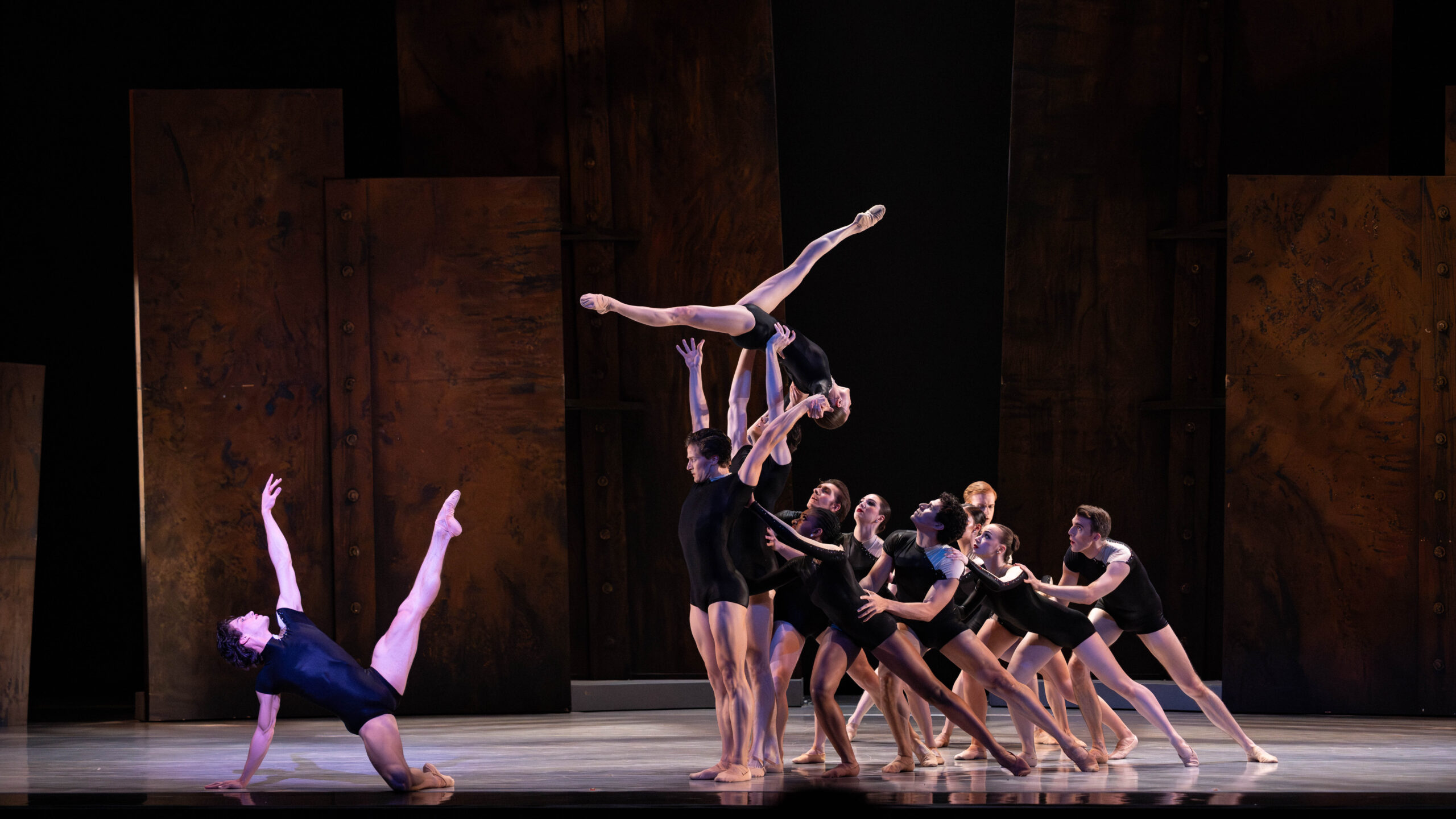Ballet West delivers a varied and exquisite Stravinsky feast
Ballet West continues its season with “The Rite of Spring,” Friday night at the Lawson Capitol Theatre. This triple-bill program explores the music of Igor Stravinsky while also examining the commonalities and differences of works created over the span of a century.
The program opened with the Utah premiere of Jiří Kylián’s Symphony of Psalms. Kylián’s choreography is kinetic, requiring dancers with physical flexibility, but also emotional flexibility as his work shifts quickly between moods. The artists of Ballet West rose effortlessly to his style, with smooth and seamless progressions between a series of short pas de deux. Katlyn Addison and Hadriel Diniz embodied an electric vitality as they raced across the stage with sharp movements.
In stark contrast in mood, Anisa Sinteral and Dominic Ballard were exquisite as they slowly melted into and out of complex, angular shapes that relied on intense balance and coordination.
Apollo by George Balanchine follows the birth of the young god, his introduction to the muses, and ascension to Mount Parnassus. Apollo can sometimes feel excessively formal, but the performance on opening night was playful and fun. After the dramatic first stumbling steps of birth, Adrian Fry was cool and insouciant as a rock star as he windmilled his arm playing his lute. As Calliope, Lillian Casscells had light footwork that was a delight to watch and Rylee Ann Rogers was a stunning Polyhymnia, with lyric and eloquent gestures.
The pas de deux between Katlyn Addison and Fry had a clarity of movement that showcased their shared poise. They have partnered regularly over recent years and on opening night they were elegantly synchronized.
The program concluded with Nicolo Fonte’s The Rite of Spring, which Ballet West premiered in 2014.
For these performances, Fonte has newly choreographed sections of Stravinsky’s celebrated ballet, removing a character played by a child and stripping away some narrative moments. The ballet otherwise retains the same sets and costumes.
Fonte was the choreographer in residence at Ballet West for a decade, and the company has performed six of his works in that time. The dancers seemed comfortable with his singular technique, which include exaggerated and stylized arms, and footwork that leans into the rhythm and syncopation of the music.
Although there are brief solos and pas de deux throughout, Rite of Spring is an ensemble piece, and the moments with more than a dozen dancers on stage together are captivating in their intensity.
One dazzling moment on opening night was when Nicole Fannéy is joined by a small group of male dancers. With their help she explores all levels of vertical space, lifted high in the air before dropping nearly to the floor in a mesmerizing display of athleticism and control.
Although the music of Stravinsky is the clear commonality throughout the program, there are many physical gestures repeated throughout the evening in different ways. Symphony of Psalms included a repeated movement with an exaggerated flexed leg, which showed up in a more refined manner in Apollo, and then very sharply in Rite of Spring. Flexed and relaxed hands showed up throughout the night, and each piece included moments where dancers rest their head in the hands of another. The dancers exhibited great nuanced technique performing similar steps in a completely different manner based on the style of the choreographer.
The Ballet West Orchestra performed well under music director Jared Oaks. The three scores by Igor Stravinsky differ greatly in their resources and styles— Symphony of Psalms includes a choir, and Apollo is only for strings—yet all were effectively performed.
Ballet West’s The Rite of Spring continues through April 12. balletwest.org
_______________
Ballet West’s 2025-26 season will present a collection of dramatic favorites and a number of Utah premieres.
Opening the season October 24-November 1 is Romeo and Juliet, choreographer Michael Smuin’s dramatic retelling of the Shakespeare classic set to the romantic score by Sergei Prokofiev. Following is “A Midsummer Night’s Dream,” a double-bill that includes Sir Frederick Ashton’s The Dream with music by Felix Mendelssohn. This program, which runs November 7-15, also includes Les Noces by Bronislava Nijinska, which Ballet West first performed in 2023.
The season continues December 5-27 with Willam Christensen’s The Nutcracker, a holiday tradition for decades. February 13-21 brings the Utah premiere of Trey McIntyre’s Peter Pan, set to music of Edward Elgar.
The company presents a program of Utah premieres of Broadway-influenced works April 10-18 with Carousel (A Dance) by Christopher Wheeldon set to the music of Richard Rodgers, Antique Epigraphs by Jerome Robbins with music by Claude Debussy, After the Rain Pas de Deux by Wheeldon with music by Arvo Pärt, and West Side Story Suite by Jerome Robbins with music by Leonard Bernstein and lyrics by Stephen Sondheim.
Ballet West II will premiere a new Family Classic production of The Legend of Sleepy Hollow March 27-28, and the Choreographic Festival will spotlight the work of Utah companies as Ballet West is joined by Ririe-Woodbury Dance Company, Repertory Dance Theatre, and SALT Contemporary Dance, May 13-16.
Season ticket packages are available now at balletwest.org

